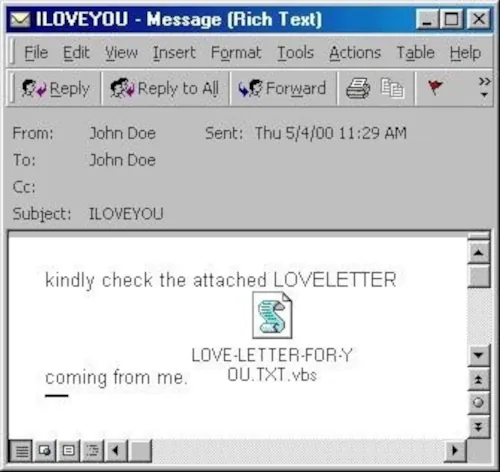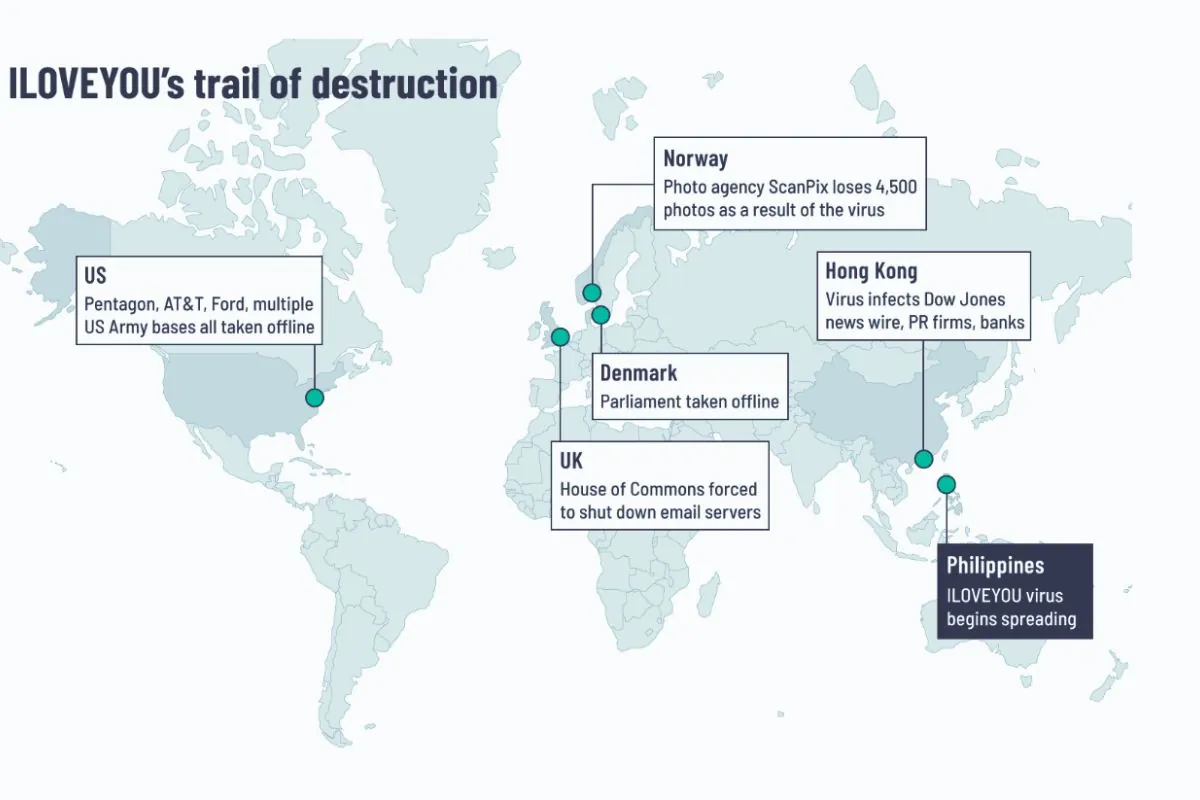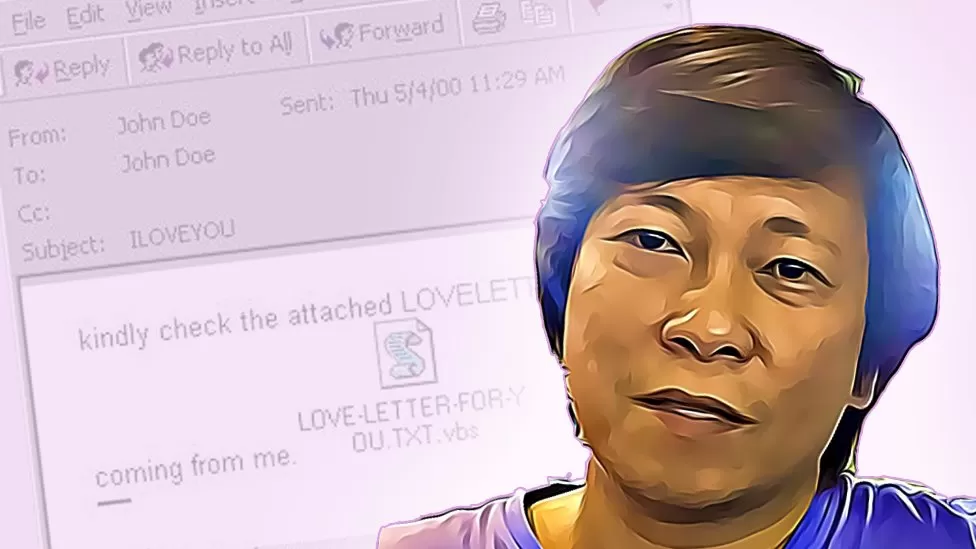We humans always look for love. It is our both strength and weakness and makes us more human. Bad boys in the computer world know this. And they exploited this weakness to target millions of people online many times.
One such notable event was the first-ever virus attack in the Philippines. Which targeted people eager to read infected “I Love You” letters received in their mail.
In this article, we will see detailed information on the “I Love You” virus attack that originated philippine and spread worldwide in May 2000.
What is the I Love You Virus?
In May 2000 people around the world started receiving emails with the subject “ILOVEYOU” and an attachment named “Love-Letter-For-You.txt.vbs” was the I Love You Virus. The I Love You Virus is also called the Love Letter Virus Love Worm or Love Bug.

The I Love You Virus was craftily spread through people’s email inboxes. The virus was hidden in an email attachment. This attachment seemed harmless as it resembled a text file, something computers commonly used at that time.
But actually, it was a VBA script clickbait. When people opened the email and clicked on the attachment, the virus would activate and start wreaking havoc on their computers.
The virus propagated by sending copies of itself to all the contacts in the victim’s Microsoft Outlook address book, leading to its widespread reach. It’s estimated that within just ten days, around 45 million computers were affected, resulting in approximately 10 billion USD worth of damage.
The First-Ever Computer Virus In The Philippines
It is known for being the first significant computer virus to emerge from the Philippines. It was created by a Filipino computer programmer named Onel De Guzman.
His motivation for designing this virus was to gain access to Windows passwords on computers and internet accounts of various users. The virus was named “I Love You” with a hidden agenda behind it. He used a psychologically attractive clickbait strategy so more people opened infected VBA scripts attached to the email.
Once the I Love You Virus was unleashed, it spread rapidly, infecting computers not only in the Philippines but also across the globe. It caused massive damage to computer systems, leading to data loss and disruptions.
The Aftermath of the “I Love You Virus” Epidemic

The I Love You Virus was not only a nuisance to individuals but also managed to infiltrate prominent institutions such as the,
- US Military Bases
- UK’s House of Commons,
- Ford Company,
- and even Microsoft.
The damage was so extensive that warnings were issued to computer users to avoid opening any emails with the words “I Love You” or “Love Letter.”
In 2012, the Smithsonian Institution listed the ILOVEYOU virus as one of the top ten most dangerous computer viruses in history.
The I Love You Virus taught the world some crucial lessons about computer security. It highlighted the importance of being cautious while opening email attachments and the need for strong virus protection measures.
Cyber security has since become a significant concern, leading to the development of advanced antivirus software and stricter laws to prevent such incidents.
What happened to the I Love You creator
It was immediately identified the virus originated in the Philippines as it was sending scrapped information to email ids registered in the Philippines. As an owner of those email ids person named Onel De Guzman was immediately identified as an “I love you” virus creator.

Despite the chaos it caused, the creator, Onel De Guzman, faced minimal consequences due to the relaxed cyber security laws at that time in the Philippines. There were no rules in the Philippines that said it was illegal to create harmful software like viruses.
Because of this, two people named Ramones and de Guzman were let go without facing any charges from the government. To fix this problem in the law, the Philippine Congress made a new law called Republic Act No. 8792, also known as the E-Commerce Law, in July 2000. This was a few months after the big outbreak of the harmful computer worm.
The person named De Guzman didn’t want to be famous or known by the public. The last time people saw him in public was at a meeting in 2000. He kept his face hidden and let his lawyer answer most of the questions. Nobody knew where he was for a very long time, about 20 years.
Then, in May 2020, a person named Geoff White, who investigates things, found Onel de Guzman working at a small store fixing mobile phones in Manila. De Guzman admitted that he made and spread the virus. He said he made it to steal passwords for getting on the Internet because he didn’t have money to pay for it. He also said he made it all by himself and cleared the names of the other two people who were accused of helping him make the virus.
Conclusion
The I Love You Virus was a turning point in the world of computer viruses. Its rapid spread and extensive damage showcased the vulnerability of computer systems and the need for heightened cyber security measures. While the virus left a trail of chaos and financial loss, it also led to a greater understanding of the importance of protecting our digital devices from malicious threats.
As technology continues to advance, the lessons from the I Love You Virus remain relevant in safeguarding our digital world.
